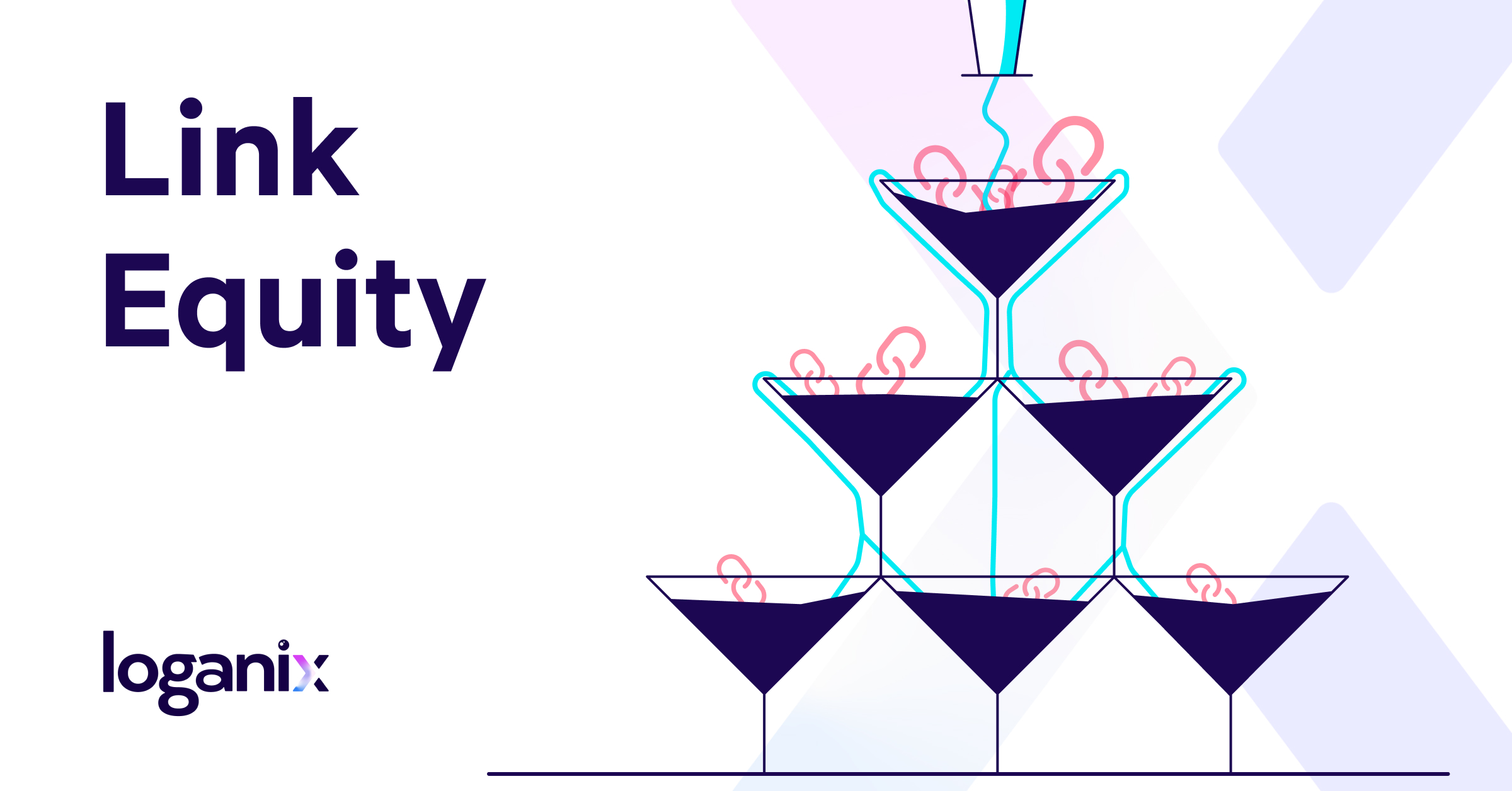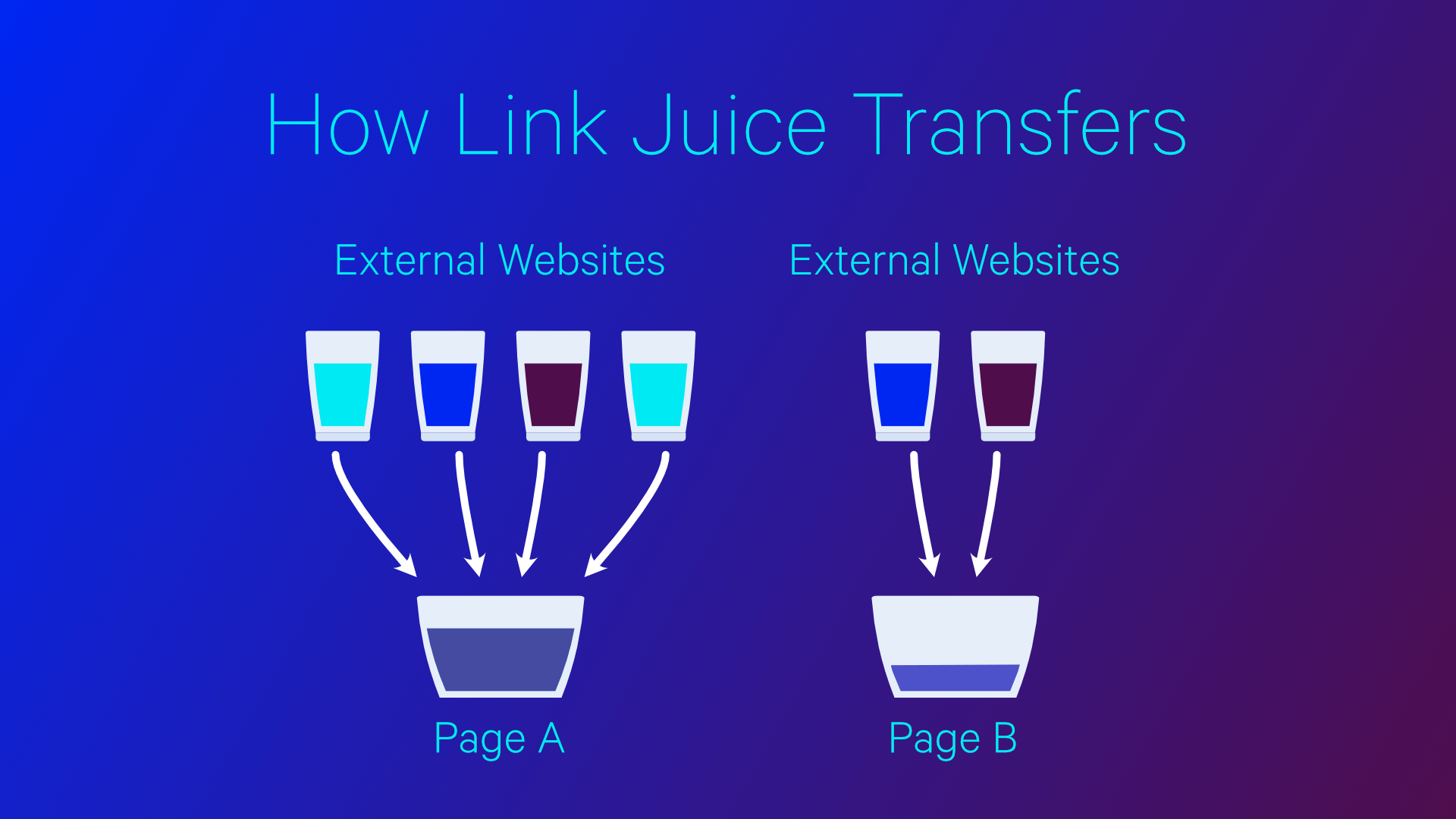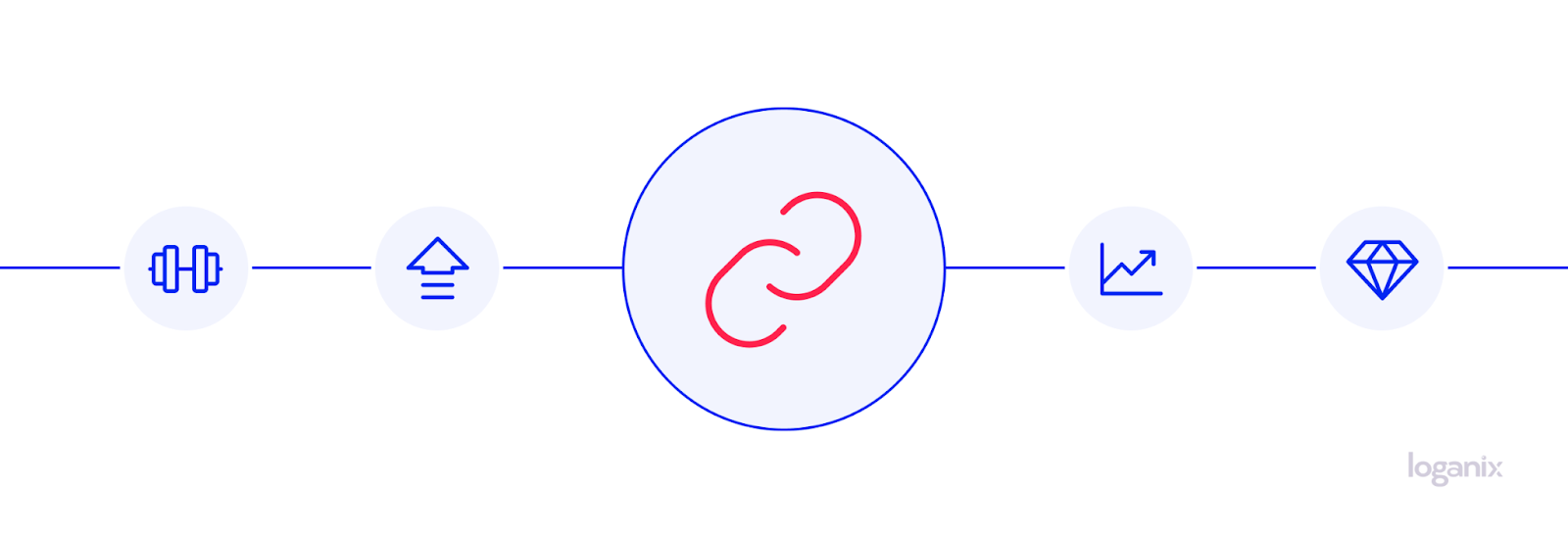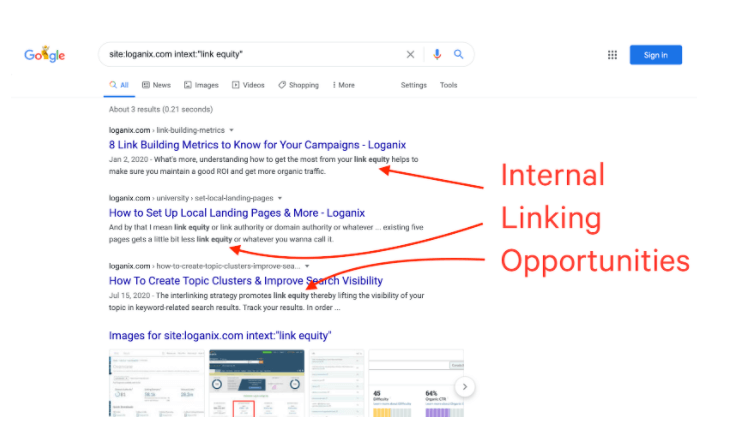What is Link Equity? An Exploration of Link Juice & Link Authority

Hand off the toughest tasks in SEO, PPC, and content without compromising quality
Explore ServicesA recent Moz study delved deep into the world of links, analyzing a staggering 27,000 queries. The findings? A strong correlation exists between links and rankings.
Just be careful—while links can influence rankings, it’s not a hard and fast rule. The value of links can vary widely. Yep, they’re not all created equal.
To get you up to speed, in this guide, we
- answer the question, “What is link equity?”
- explore its importance to search engine optimization (SEO),
- and check in with Google to get their take on link equity, internal link, and link-building.
What Is Link Equity?
Link equity, often called “link juice” or “link authority,” represents the value or authority that a link transfers from one web page to another. It’s a concept rooted in the idea that certain links, depending on various factors (that we’ll cover in just a moment), can pass more authority than others. Moz’s research highlights the importance of this metric, revealing its pivotal role in influencing how search engines rank web pages.

Think of it this way: every web page is an island. The bridges connecting these islands are the links. When one web page links to another, it’s akin to building a bridge to that island, signaling its importance. This “bridge” essentially tells search engines, “This destination is noteworthy and deserves recognition!” The stronger and more reputable the bridge, the more traffic it directs and the more valuable the connection.
And just so you don’t get your wires crossed, link equity isn’t exclusive to external backlinks or inbound links from other websites. It also applies to internal links—those that connect different pages within the same website.
So whether it’s an external site vouching for your content or one of your own pages signaling the importance of another, the principle of link equity remains consistent.
Learn more: Interested in broadening your SEO knowledge even further? Check out our SEO glossary, where we’ve explained over 250+ terms.
Why Is Link Equity Important?

At the heart of understanding link equity lies Google’s PageRank algorithm. PageRank was one of Google’s foundational innovations, designed to rank web pages in their search engine results. The essence of Google PageRank is to evaluate the number and quality of links pointing to a page, resulting in an estimation of its significance in the vast web ecosystem.
Simply put, it’s Google’s method of determining how authoritative and relevant a page is based on the links it receives.
Now, where does link equity fit into this? Link equity is like the currency of the PageRank system. While PageRank gauges the overall importance of a page, link equity determines the value or “weight” of each individual link.
Think of it this way: if the web were a democracy, PageRank would be the election system, and link equity would represent the individual votes. However, as we hinted at earlier, not all votes (or links) have the same influence—some carry more weight due to their source’s authority and relevance.
Over time, Google’s ranking algorithms have evolved, integrating numerous other signals. But the foundational principle remains intact: links, especially those with high link equity, are pivotal to SEO success.
What Determines Link Equity Value?
The strength of the “bridge” hinges on several factors: the authority of the page providing the link or page authority, the reputation of the domain it comes from, how relevant the link is to the content, and the type of link—whether it’s a dofollow link or a nofollow link.
1. Authority of the Linking Website
The reputation and credibility of the entire website providing the link play a pivotal role in determining link equity. A nod of approval from a well-respected, authoritative website can significantly boost the link’s value. This is where metrics like Moz’s domain authority (DA) or Ahref’s domain rating (DR) come into play. The higher the DA or DR, the higher the likelihood a link will hold significant SEO value.
Learn more: domain authority vs. domain rating.
2. Authority of the Linking Web Page
The specific page’s authority providing the link also matters. This is often referred to as Moz’s page authority (PA) or, in Ahref’s terminology, URL Rating (UR). The higher the PA or UR, the more link equity it can potentially pass on.
Learn more: Want to check the domain authority of a bunch of sites? Use our FREE domain authority checker tool to bulk check DA (+ other metrics like DR, CF, TF, and organic traffic).
3. Relevance
A link’s relevance to the content it points to is paramount. Search engines prioritize links that are contextually related to the content they’re linked to. For instance, a link from a tech blog to a software company’s website would likely carry more weight than a link from a site selling sporting equipment to the same software company.
4. Number of Outgoing Links on the Referring Page
Think of link equity as a pitcher filled with juice. When a page links out to other pages, it’s like pouring juice into multiple glasses. The more glasses (outgoing links) you have to fill, the less juice each one gets. So, if a page has many outgoing links, each linked page receives a smaller share of the “link juice.”
5. Relevance of the Anchor Text
The anchor text, or the clickable text of a link, provides context about the linked content. The more relevant an anchor text is for the page it links to, the more link equity will be passed along that link.
6. Link Location
Another Moz study revealed that links on a web page are not uniformly valued by search engines. Those embedded within the primary content are often deemed more significant, especially if positioned higher on the page.
In contrast, links in footers or sidebars might not carry the same weight. This differentiation arises because search engines perceive the main content as being of greater relevance to users, while footer links might be used primarily for indexing purposes.
7. Crawlability
For a link to pass equity, it needs to be crawlable or easily indexable by search engines. If search engine bots can’t access or “crawl” a link, it won’t pass any value. This is why it’s essential to ensure that links aren’t blocked by robots.txt files or marked as “nofollow.”
8. Other Factors
Several other elements can influence link equity. The HTTP status of the linked page matters, too. For instance, links to broken or non-existent pages (404 errors) won’t pass equity. What’s more, the nature of the link—whether it’s a do-follow or a no-follow—can determine if and how much equity is passed.
Just remember: as mentioned earlier, the value of the “strength of the bridge” hinges on a combination of these factors, making each link unique in its contribution to SEO.
How Do I Check Link Juice?
As of March 7, 2016, Google officially removed all access to any PageRank scores. However, numerous tools exist to check what backlinks you’re receiving and even other page authority scores like Page Authority by Moz and URL Rating by Ahrefs.
These scores use metrics you need to know for your link-building campaigns. Knowing what they are, how they work, and how to use them is essential for any SEO starting a link-building campaign.
Links from non-related sites or to non-related content, even if earned from genuine sites, can be harmful—link relevance matters.
Nofollow Links + Link Juice
You may have heard of no-follow links and wondered, do no-follow links pass link juice?
No-following a link means you’re telling Google that the link should not give any of your page’s reputation. This is crucial for user-generated content such as comments or if you don’t want to dilute the relevance of your site by linking to a non-related site.
For the best results, you want high-value dofollow links.
How to Get More Link Juice for Your Web Pages
Here are some tactics to get the most from your link juice.
- Create content worth linking to
- Create topic clusters
- Get interviewed by high-authority websites
- Create visual content that is likely to be shared
- Sponsor or speak at an event
- Network with other organizations or influencers
- Have social sharing buttons on your website
- Post regularly on social media
- Encrypt your site with SSL
- Use internal links
How to Quickly Find Internal Link Juice Targets:
Use this Google search operator to find pages that contain the keyword you want to build internal text links for.
[site:www.yoursite.com intext:“target keyword”]

If you’re looking for more link juice, this is a seriously easy way to get it.
8 Pages to Check for (Untapped) Backlinks
- Contact page: You can create a bulleted list of links below the fold so it doesn’t hinder users from filling out any forms.
- Terms of Service/Privacy Policies: Most don’t even consider using these pages. Again, you can add a bulleted list of links below the fold.
- About pages: This is increasingly common. Often, you can utilize this page to insert target keywords.
- News/Press: You can really tap into past press release pages without hindering users, as nobody actually reads them.
- Meet the Team pages: If the page links out to individual team member bios, you can add trailing “About the Company” sections with links.
- Footer Links: This is prime real estate often overlooked when looking to pass value and relevance internally.
- Sitemap: For sites with lots of content, implementing multiple sitemaps can provide better crawling, indexing, and the ability to boost your internal linking strategy.
- Homepage: The homepage is a power page. It should have links to some of the most competitive terms you’re trying to rank.
Conclusion and Next Steps
Connecting high authority, contextual links from trusted, established websites helps raise a site’s reputation. It’s essential to determine the link’s value, but the most critical factor is link relevance.
Loganix’s tailored link-building services are designed to not only increase the number of links pointing to your site but to ensure those links are of the highest quality, maximizing link equity.
🚀 Explore our link-building services and elevate your rankings. Don’t wait—start today! 🚀
Hand off the toughest tasks in SEO, PPC, and content without compromising quality
Explore ServicesWritten by Brody Hall on November 1, 2023
Content Marketer and Writer at Loganix. Deeply passionate about creating and curating content that truly resonates with our audience. Always striving to deliver powerful insights that both empower and educate. Flying the Loganix flag high from Down Under on the Sunshine Coast, Australia.





